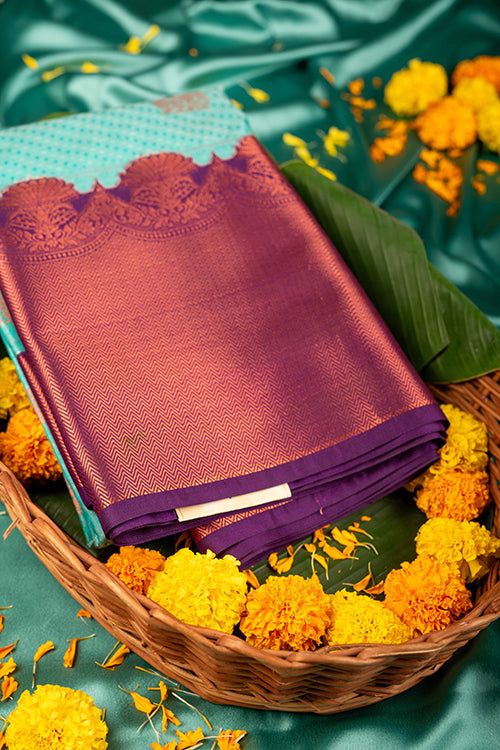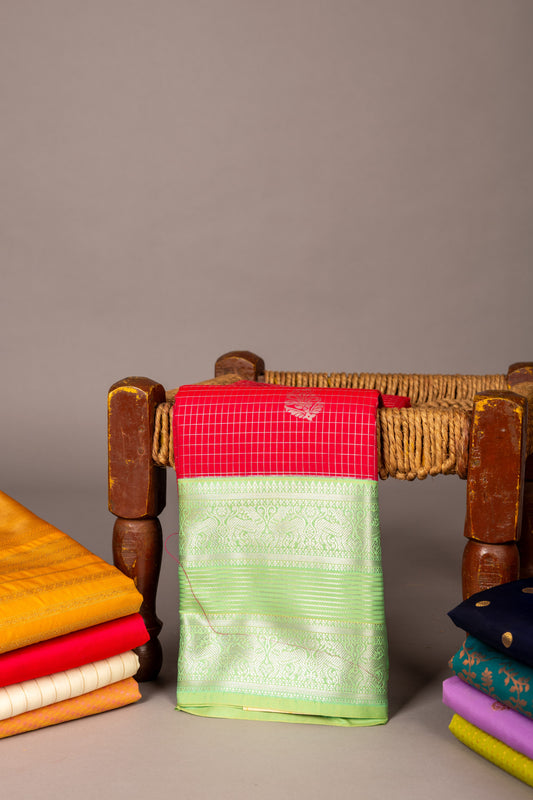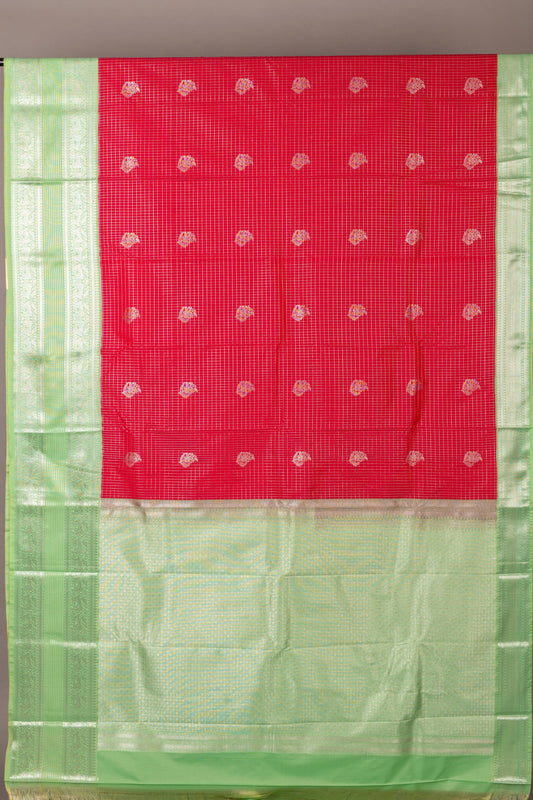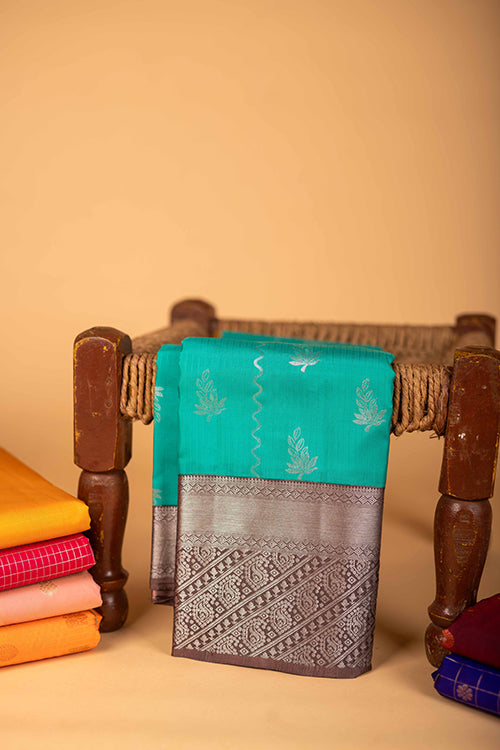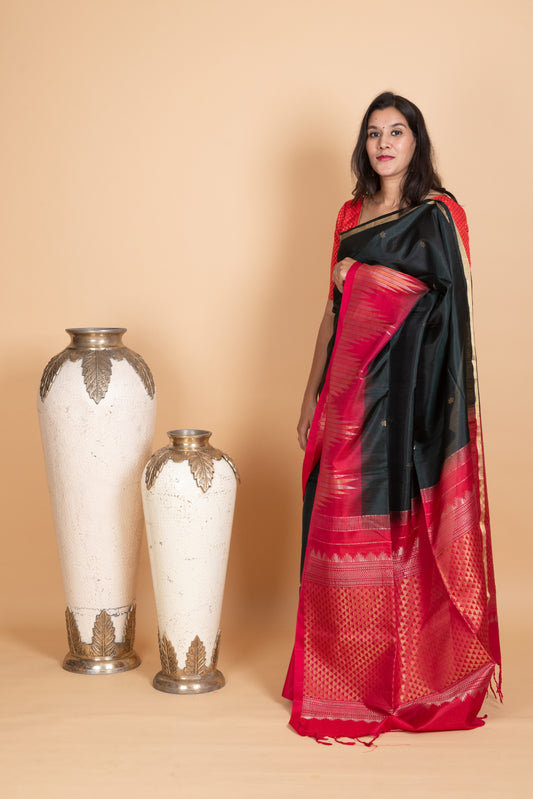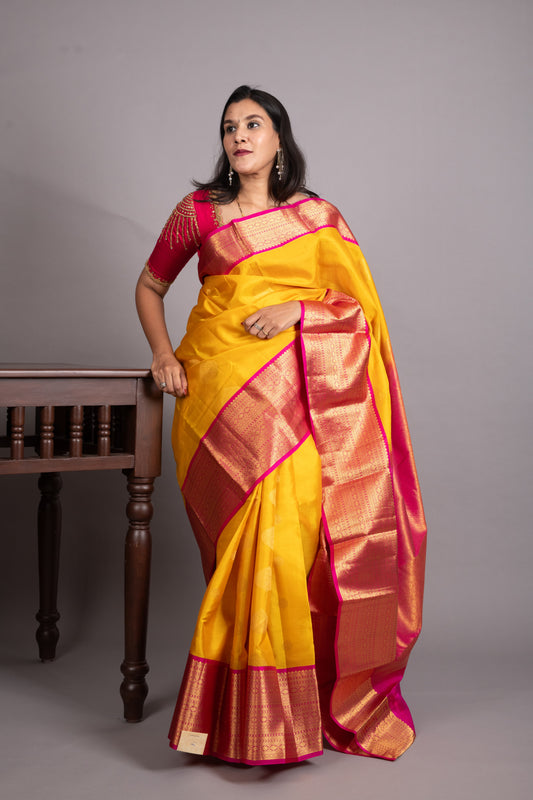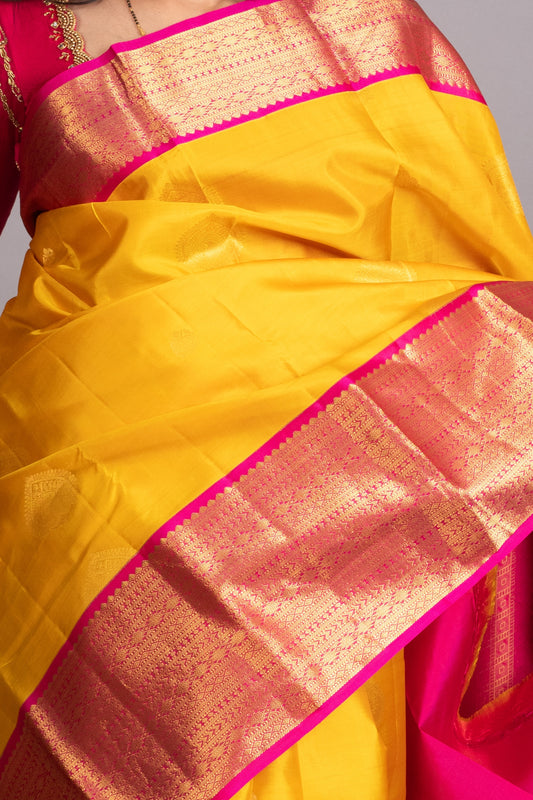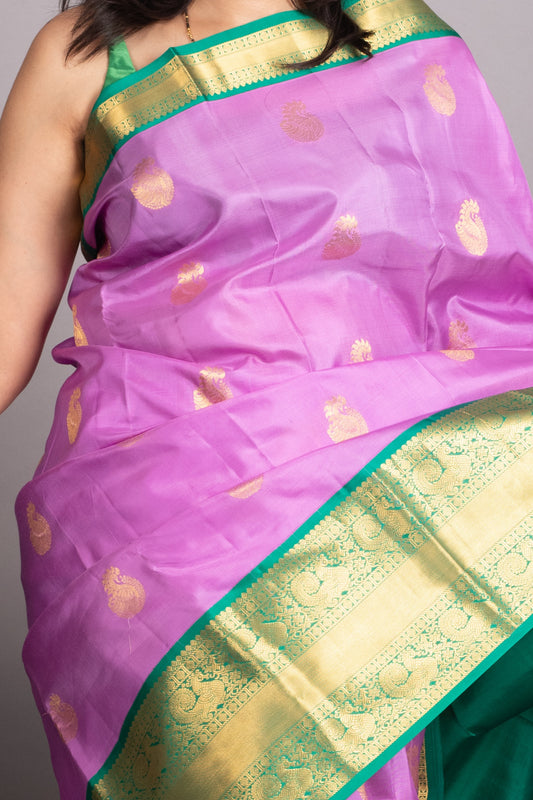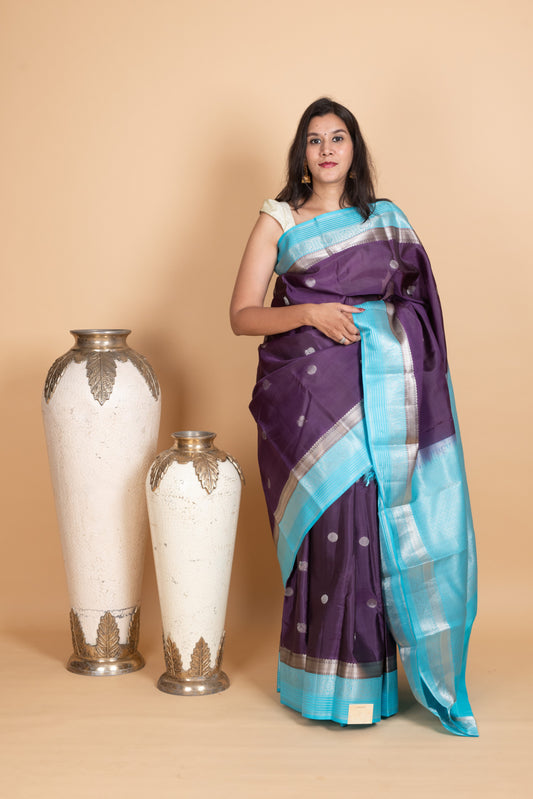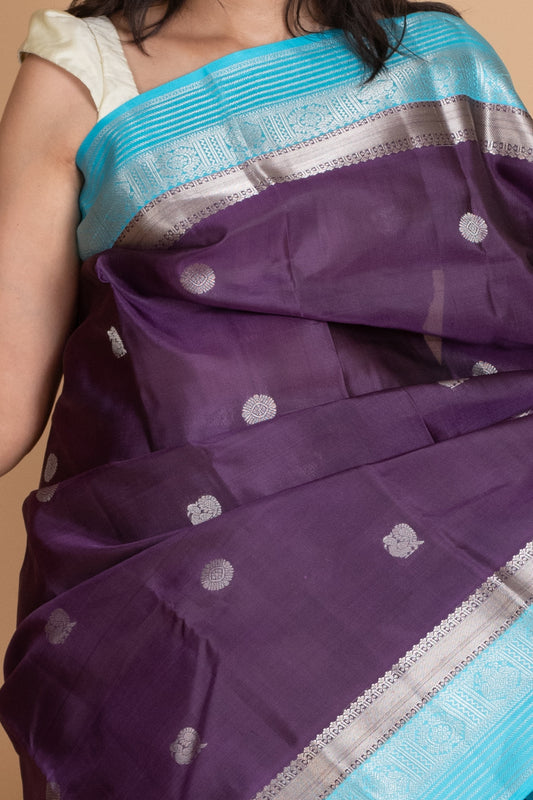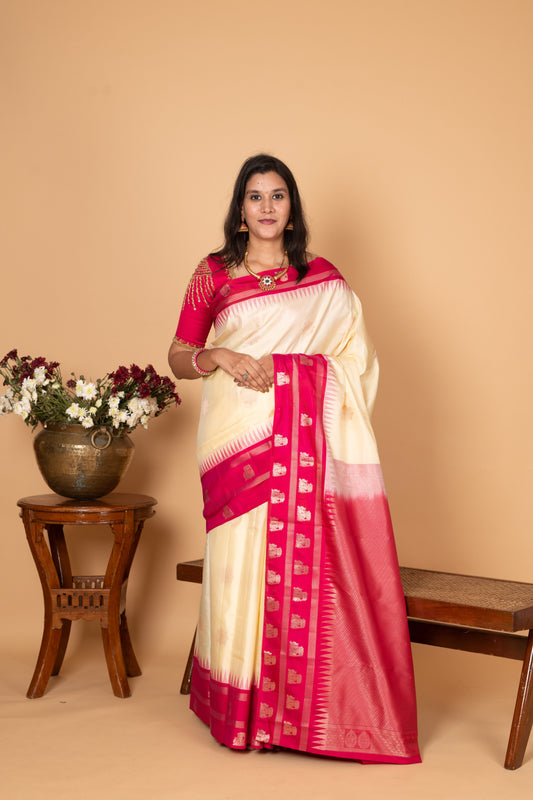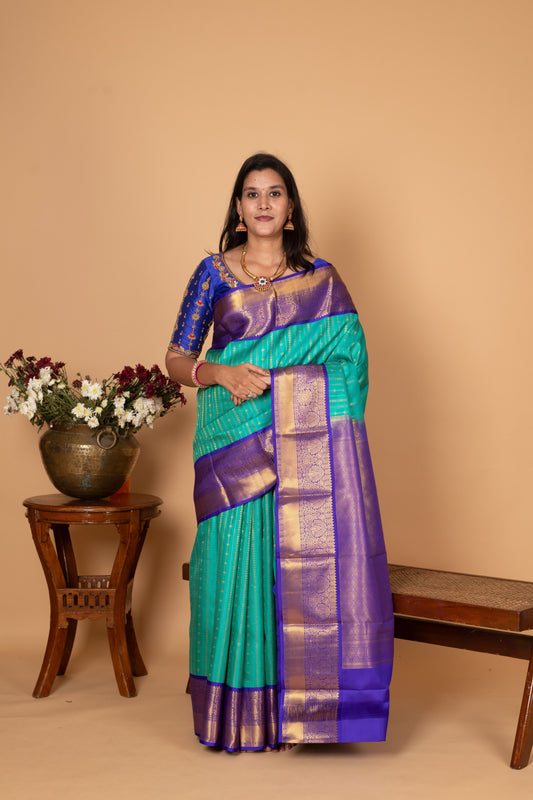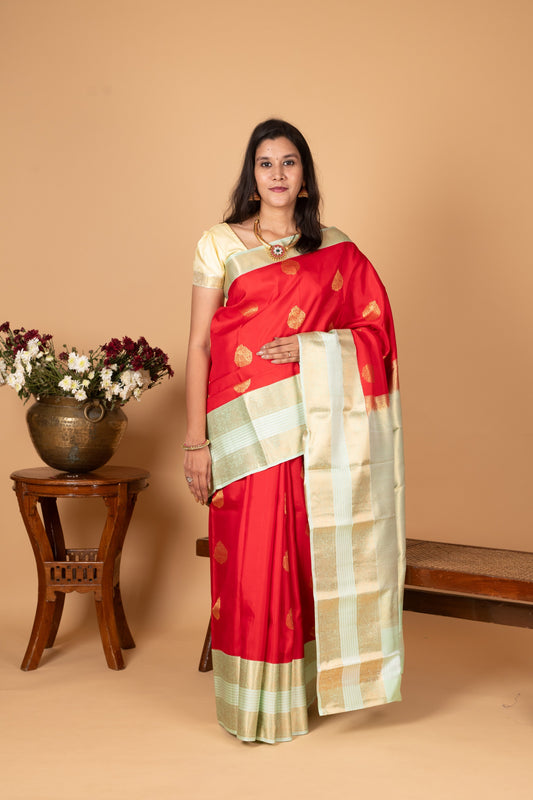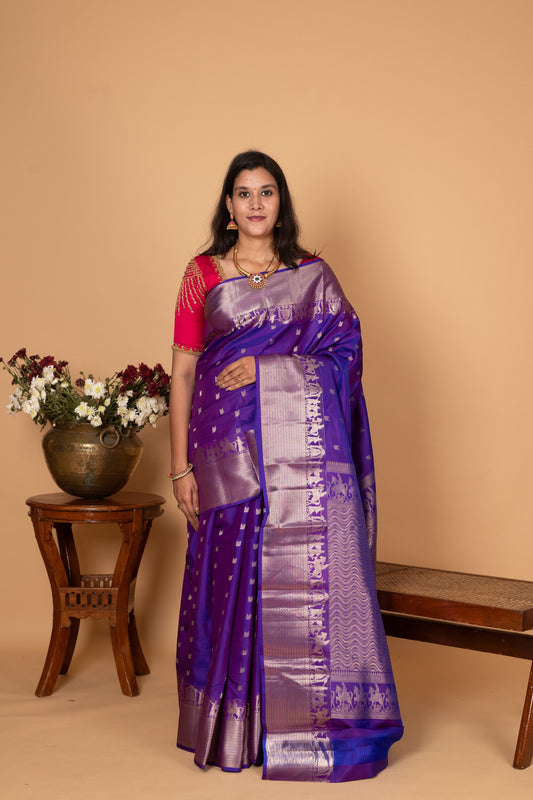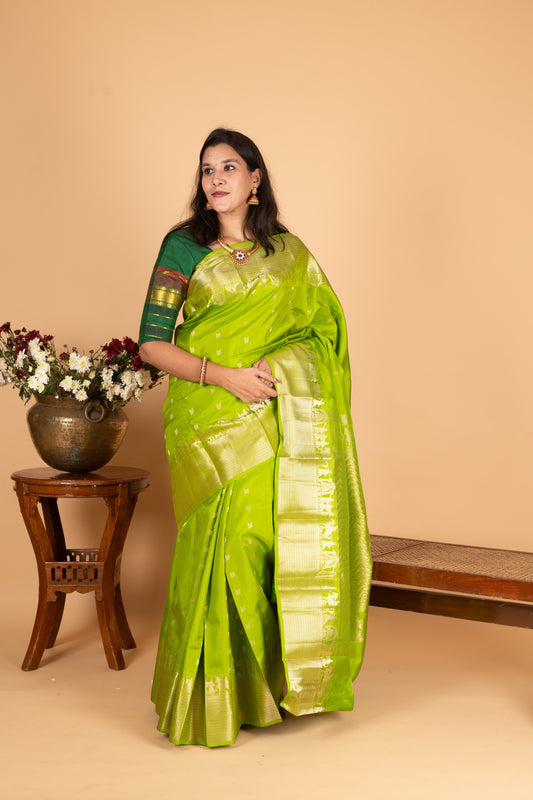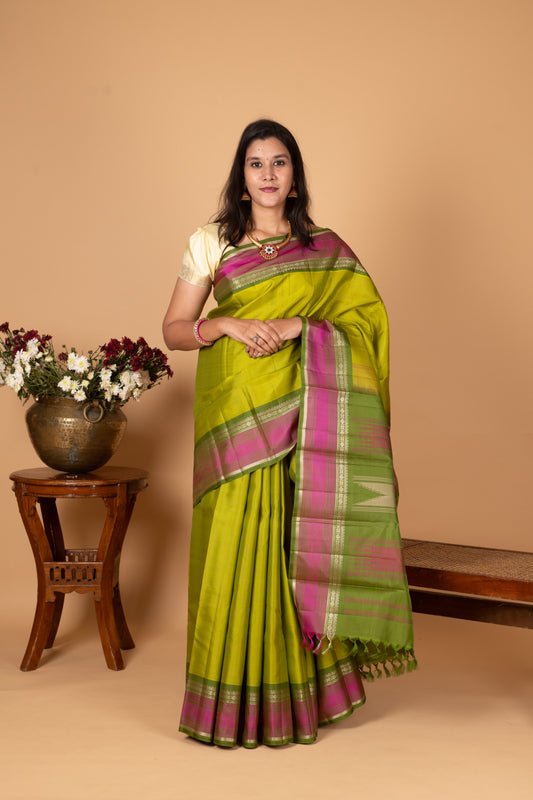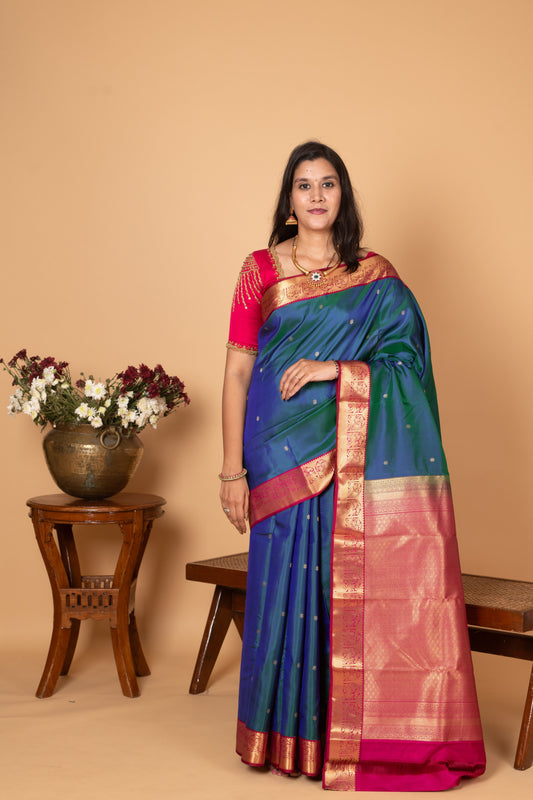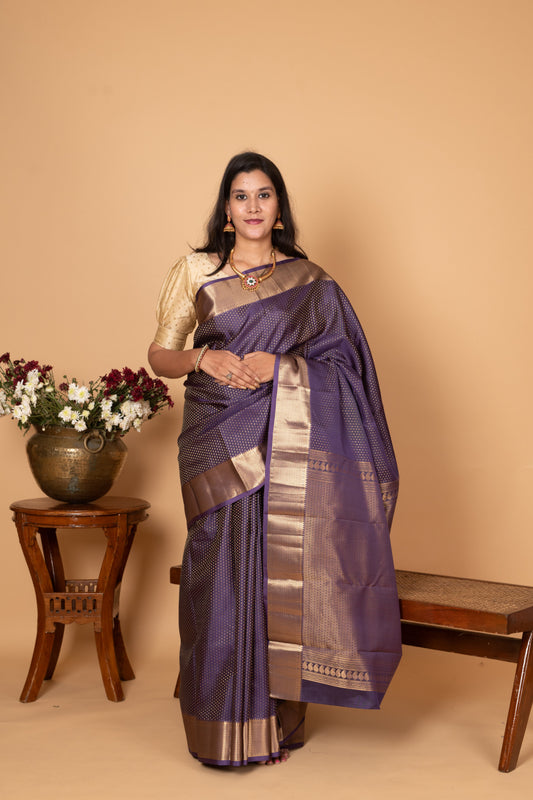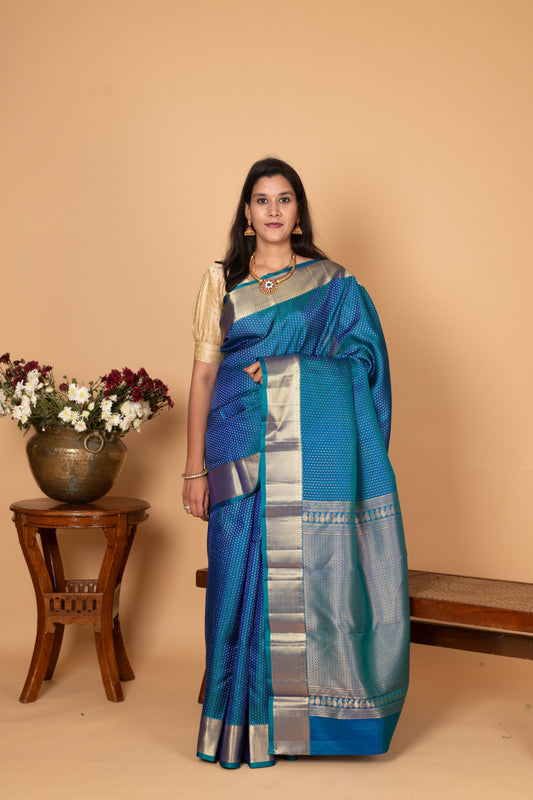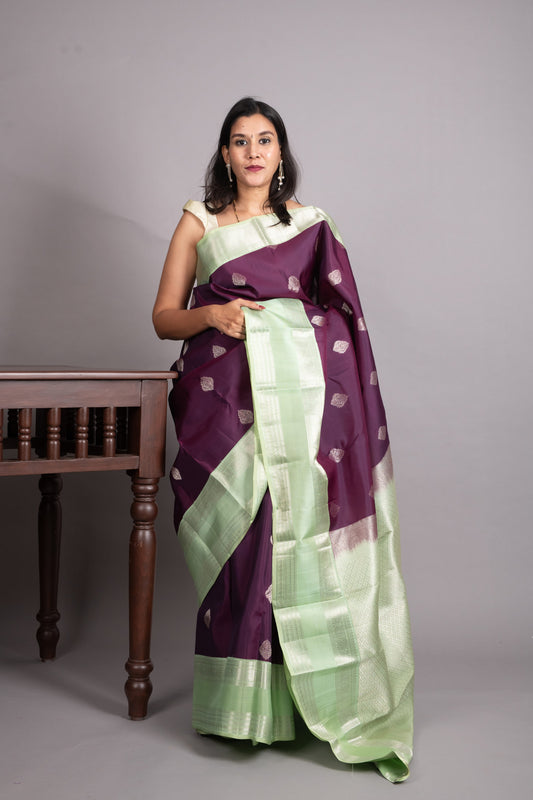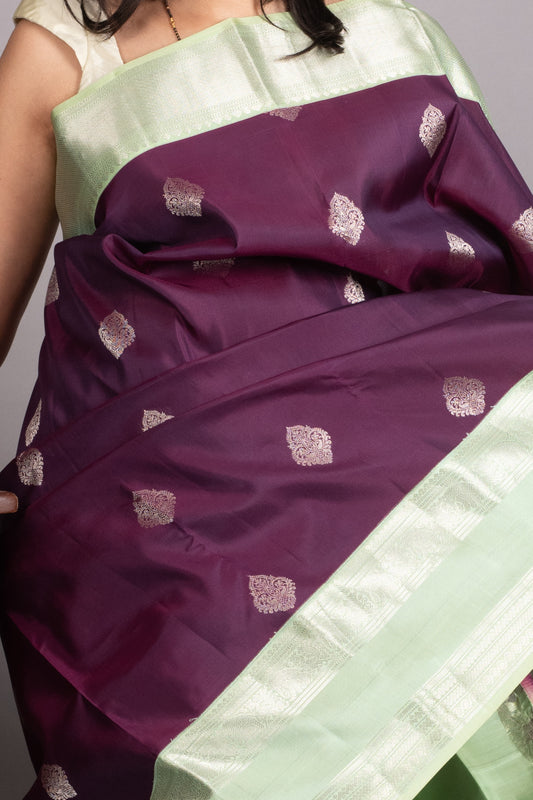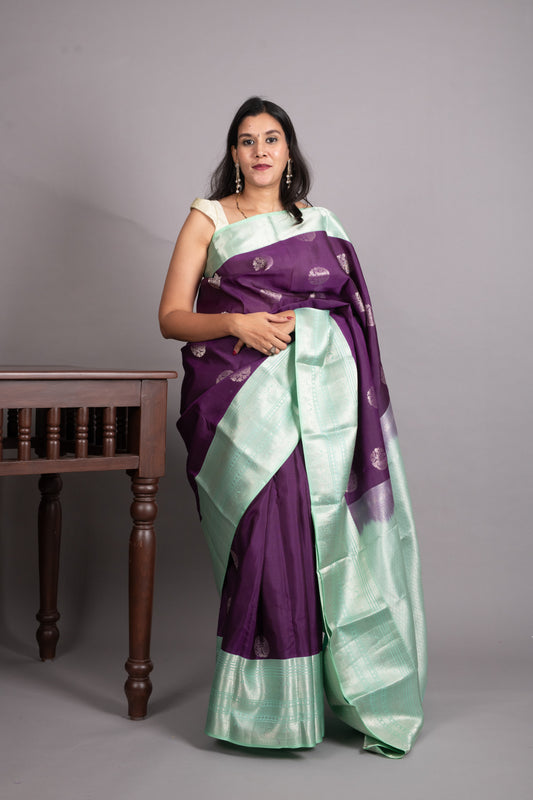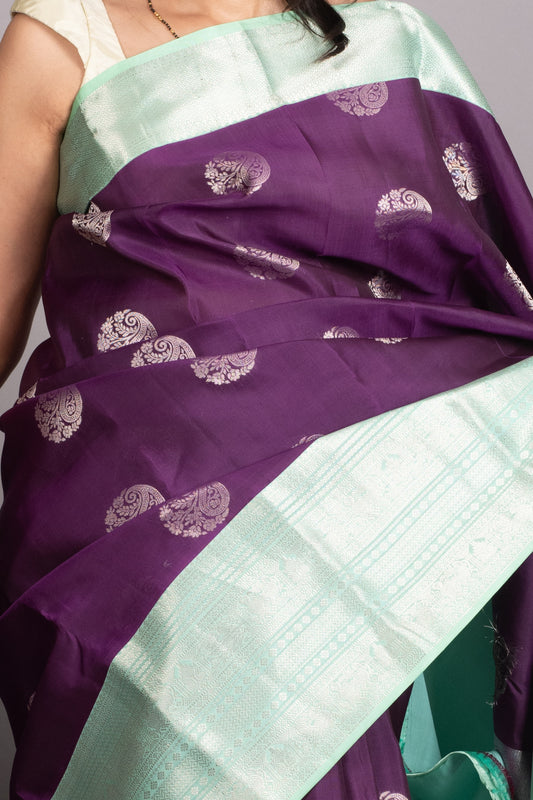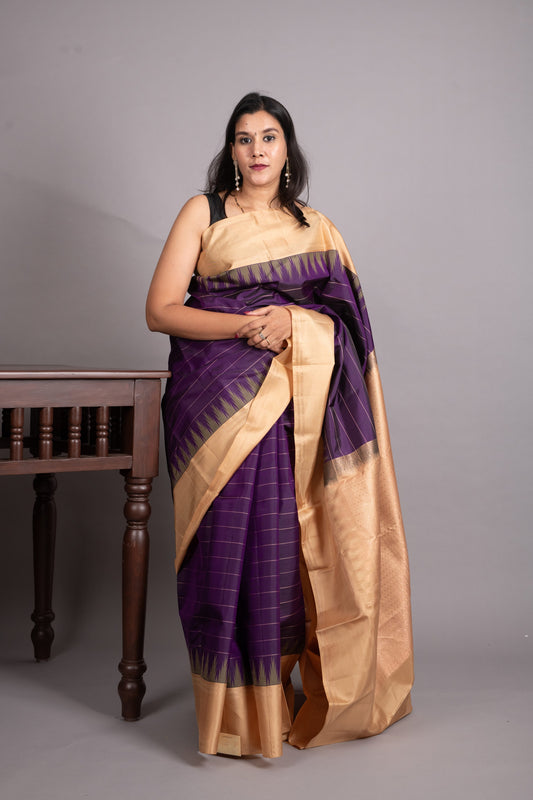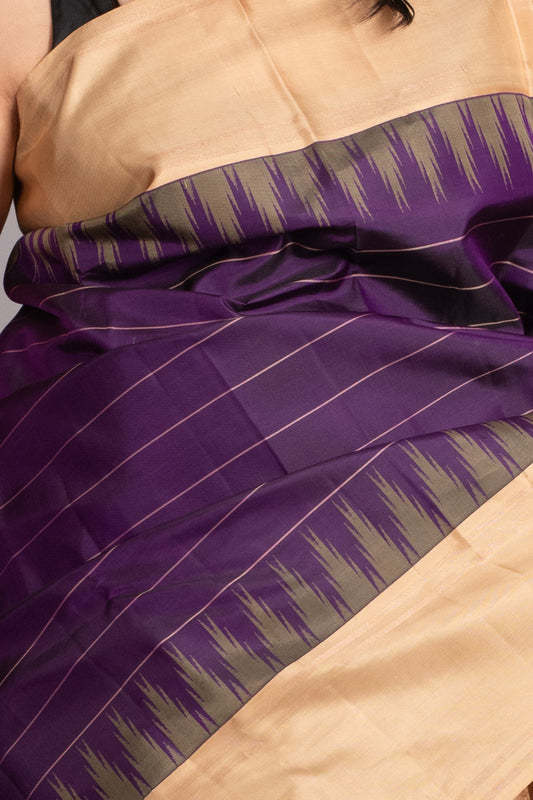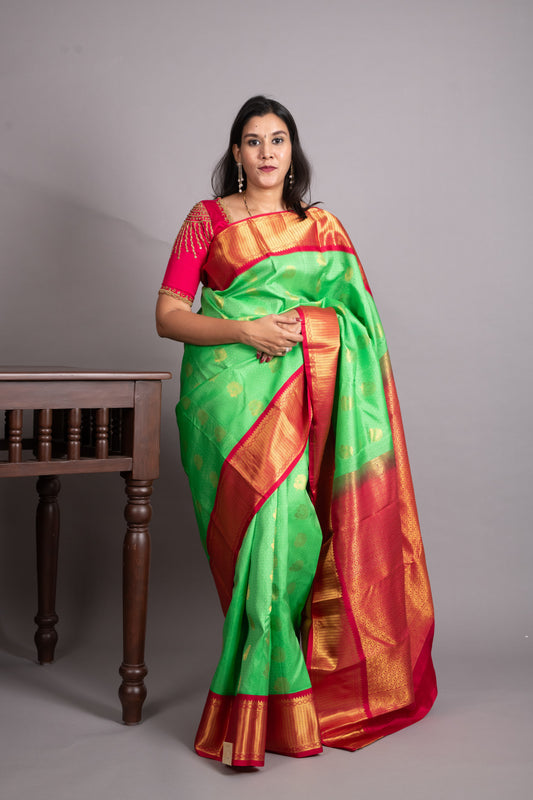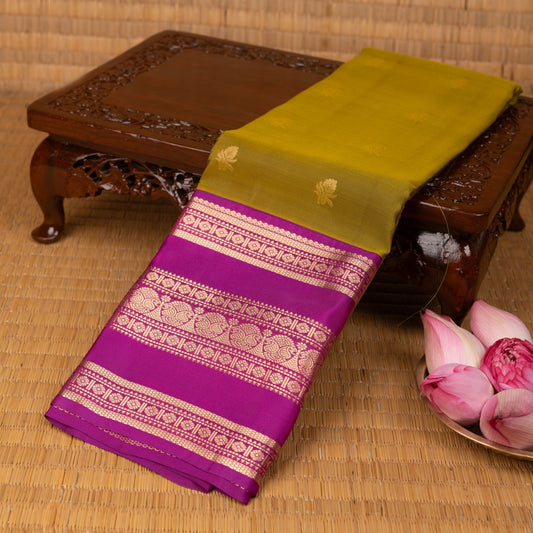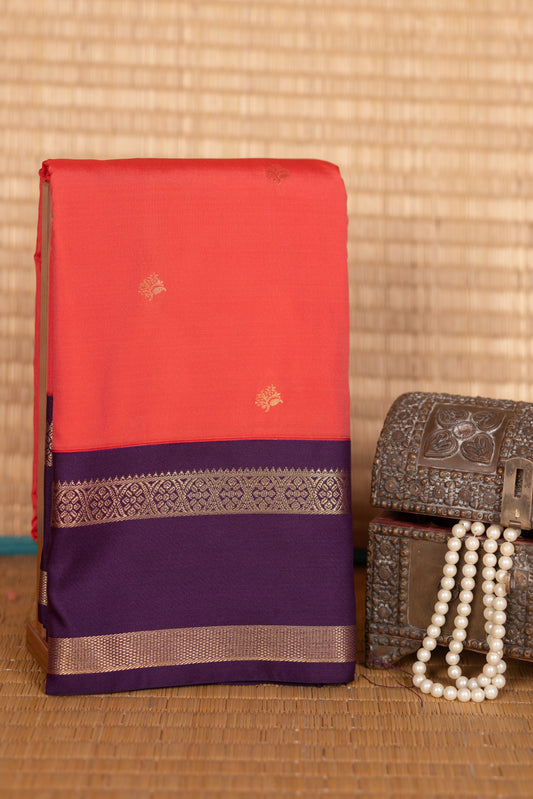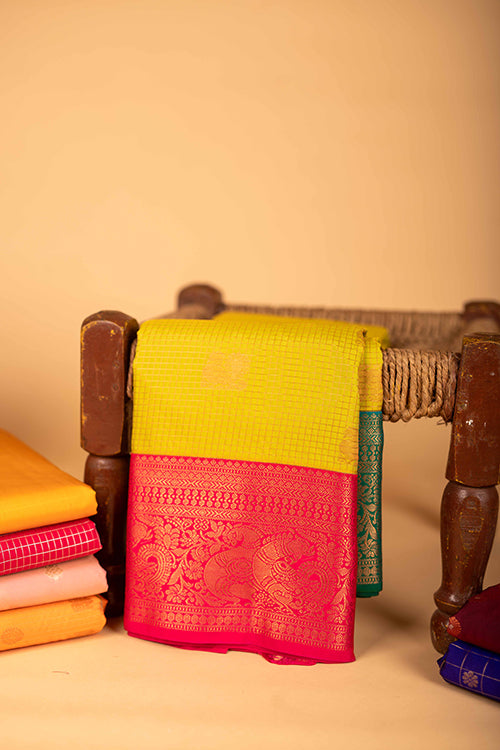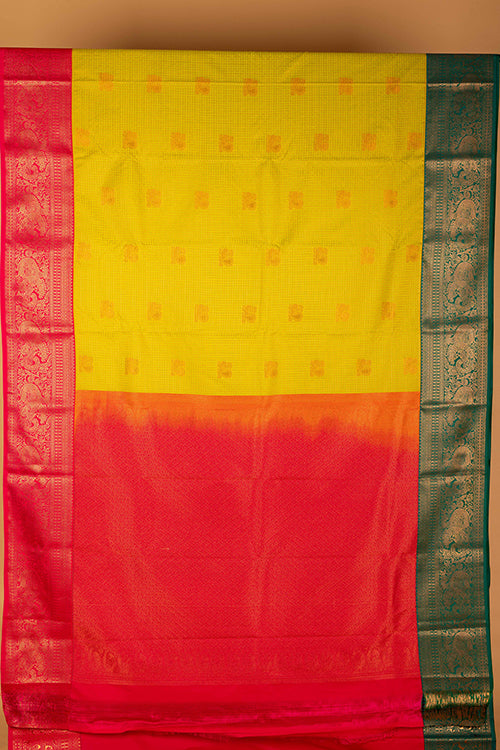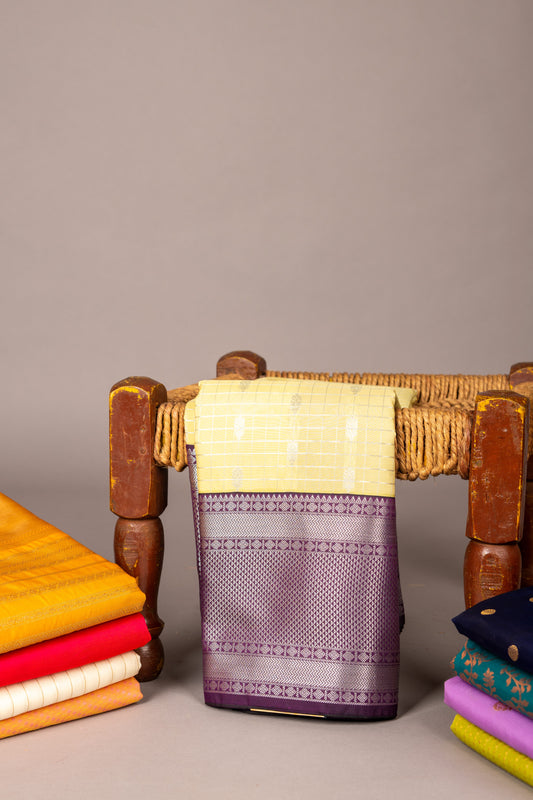Introduction
A pure silk saree is not just a garment; it is an asset to be cherished for centuries. The allure of silk sarees is undeniable, yet many buyers struggle to tell real from fake. With the high value and cultural significance of original silk sarees, especially varieties like Kanchipuram, Banarasi, and Mysore silk, many unscrupulous sellers have begun flooding the market with synthetic or blended alternatives passed off as pure silk. As a result, learning how to identify an original silk saree has become more important than ever. Here are some definitive simple ways to help you identify a genuine silk saree.
1. Examine the lustre of the Silk
One of the most telling signs of an authentic silk saree is its natural lustre. Here’s how to assess it:
Use Natural Light: Hold the saree up in daylight or near a window and gently tilt it. Real silk has a soft, natural shine that changes slightly in color when you move it or look at it from different angles. This is a hallmark of genuine silk fibers.
Note the subtle Glow: Genuine silk has a smooth, elegant glow. It has a more refined, rich finish that’s never too bright or reflective.
Artificial Silk / Synthetic: Synthetic alternatives often look overly glossy or harshly shiny.

2. Take a closer look at the Weave
The weave of a saree can give you some great clues about whether it’s made from real silk:
Feel the Texture: Pure silk sarees are often handwoven, which means they might have tiny irregularities in the weave. These small imperfections are a good sign. They show that the saree was made by hand.
Flip it Over: Turn the saree over and check the back side of the fabric. In a genuine silk saree, the design is still visible, just a little softer or less sharp.
Artificial Silk / Synthetic: In the fake synthetic or machine-made sarees the weave looks super smooth and perfect. The designs are so even. These sarees often look so shiny or have a plastic-like artificial feel on the backside.
3. The Zari Test
Zari is the gold and silver colored metallic thread woven into the fabric to create intricate designs and borders. Here’s how to check it to identify the authenticity of the saree:
Scratch the Zari: Gently scratch the Zari thread in an inconspicuous spot. Real Zari is made from silver or gold-plated red silk thread. They can be seen underneath the zari when scratched.
Artificial silk / Synthetic: If the Zari is made with plastic or synthetic fibers then it is fake. And if it has white or any other colored thread inside, it’s most likely not genuine.
Important: Do this test gently and carefully.

4. The Burn Test
The best way to test the authenticity of real silk is the burn test. But do this only on a small, loose thread or scrap, never on the saree itself.
Take a tiny thread: Take a tiny thread from a hidden spot or a loose end.
Carefully burn it: Using a lighter or a match, burn the small strand. Do this safely, away from the main fabric.
Watch and smell: Real silk burns slowly. As it is a natural protein fiber, it smells like bird feathers or burnt hair. The burnt silk leaves behind a black, crispy ash that decays easily.
Artificial silk / Synthetic: Artificial silk instead of burning, melts quickly. It smells like burnt plastic. Instead of ash, it forms a hard residue.
Important: Always do this with caution and only on a small bit of thread.
5. The Warmth Test
The warm test is a super easy way to tell if it is original silk or fake by simply using the warmth of human hands.
Maintaining a consistent temperature: Real silk, as it is constructed with the protein-based fiber Fibroin, has a natural ability to regulate temperature and balance warmth and breathability.
Rub the fabric: Rub a small part of the fabric gently between the fingers or palms.
Look for natural warmth: Real silk starts to feel warm quickly as it responds to body heat naturally.
The soft texture: It also feels soft, smooth, and almost buttery. The surface might have a slight natural grain or unevenness (especially in handwoven silk), but it should still feel luxurious.
Artificial Silk / Synthetic: Synthetic fibers like polyester or nylon usually stay cool to the touch, even after rubbing. Because they don’t absorb the heat the same way as real silk. They also have a slippery, overly smooth or plasticky texture.
6. The Sound Test
Often referred to as The Scrunch Test, The Sound test is also an effective way to find the authenticity of real silk. Here’s how to do it:
Scrunch the Fabric: Take a small portion of the fabric when it is dry. Rub it or gently scrunch it between the fingers.
Listen for the sound: Real silk produces a distinctive soft rustling or crunching sound. This sound is due to the natural fibers and the friction between the smooth silk threads.
Artificial silk / Synthetic: Synthetic fabrics produce little to no sound, or a dull, plasticky rustle rather than that crisp crunch.
7. The Water Test
Pure silk is porous as it is made up of natural fibers. It absorbs water easily and quickly. Do the water test mentioned below,
Drop some water: Place the saree on a flat clean surface. Drop 1-2 drops of water on a small area of the fabric.
Water absorption: Real silk absorbs water quickly within a few seconds. It slightly darkens when wet.
Feel after drying: After drying it returns to smoothness, with no stiffness.
Artificial Silk / Synthetic: In a synthetic saree, water beads up on the surface or takes longer to absorb. After drying it might feel stiff or plasticky. Synthetic fabrics are less porous as they are petroleum-based. So, they repel water more.
Important: Use this test on an inconspicuous area, such as the inside of a fold or the edge of the Pallu. Don’t over-wet the saree.
Additional Insight:
Spotting an original silk saree doesn’t require a degree, just a mindful gaze and a few smart checks. Starting from the unmistakable texture, weight, and weave irregularities of the handloom artistry to the trusted silk mark tag attached to the finished saree, each detail whispers authenticity. However, with the rise of modern technologies, artificial synthetic sarees are made in a way that matches almost all the qualities of real silk. So, it is always advisable to consult an expert or buy from a trusted seller.
What Makes Priyangaa Reliable?
The house of Priyangaa is driven by the mission to protect the legacy of Indian silk and the livelihoods of artisans. Their commitment to preserving heritage, promoting ethical fashion, and respecting craftsmanship is what sets them apart as a brand you can trust. With their own cluster of master weavers, they not only ensure the originality of the weave and design but also eliminate any chances of machine-made replicas or mass-produced fakes. With Priyangaa, you are not only buying a saree, but a legacy woven on trust and quality.

Conclusion:
Silk is not just any garment; Investing in original silk is not about owning a piece of clothing. It is about preserving a rich cultural heritage, supporting skilled artisans and enjoying an outfit that embodies elegance, durability and timeless beauty. Choose wisely and wear proudly.

